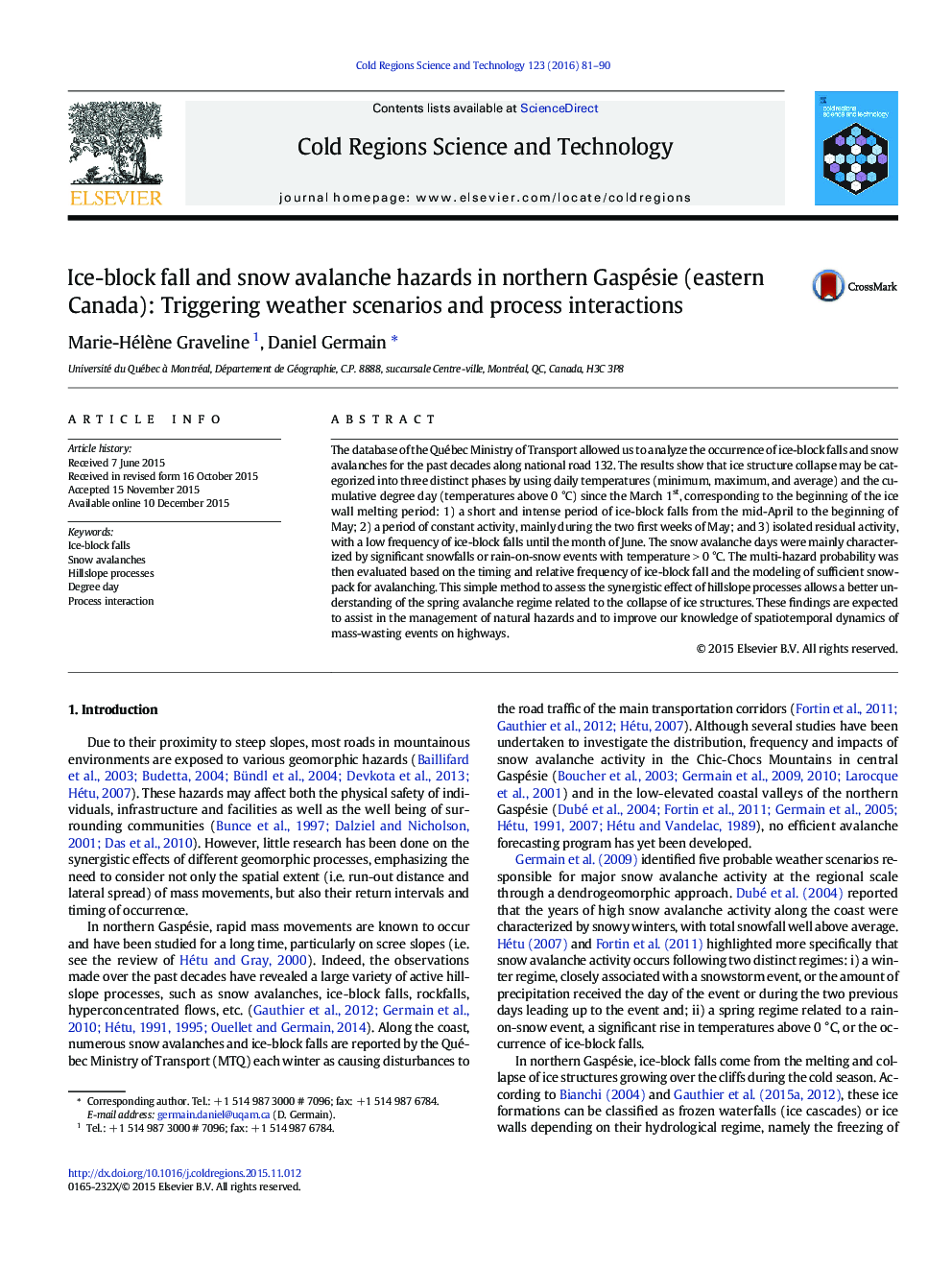| Article ID | Journal | Published Year | Pages | File Type |
|---|---|---|---|---|
| 6426601 | Cold Regions Science and Technology | 2016 | 10 Pages |
â¢We document potential synergistic effects of hillslope processes.â¢Snow avalanches are related to snowstorms, rain-on-snow events and ice-block falls.â¢Melting degree day can be used for modeling ice-block fall activity.â¢The potential interaction of both processes increases the probability of avalanching.
The database of the Québec Ministry of Transport allowed us to analyze the occurrence of ice-block falls and snow avalanches for the past decades along national road 132. The results show that ice structure collapse may be categorized into three distinct phases by using daily temperatures (minimum, maximum, and average) and the cumulative degree day (temperatures above 0 °C) since the March 1st, corresponding to the beginning of the ice wall melting period: 1) a short and intense period of ice-block falls from the mid-April to the beginning of May; 2) a period of constant activity, mainly during the two first weeks of May; and 3) isolated residual activity, with a low frequency of ice-block falls until the month of June. The snow avalanche days were mainly characterized by significant snowfalls or rain-on-snow events with temperature > 0 °C. The multi-hazard probability was then evaluated based on the timing and relative frequency of ice-block fall and the modeling of sufficient snowpack for avalanching. This simple method to assess the synergistic effect of hillslope processes allows a better understanding of the spring avalanche regime related to the collapse of ice structures. These findings are expected to assist in the management of natural hazards and to improve our knowledge of spatiotemporal dynamics of mass-wasting events on highways.
